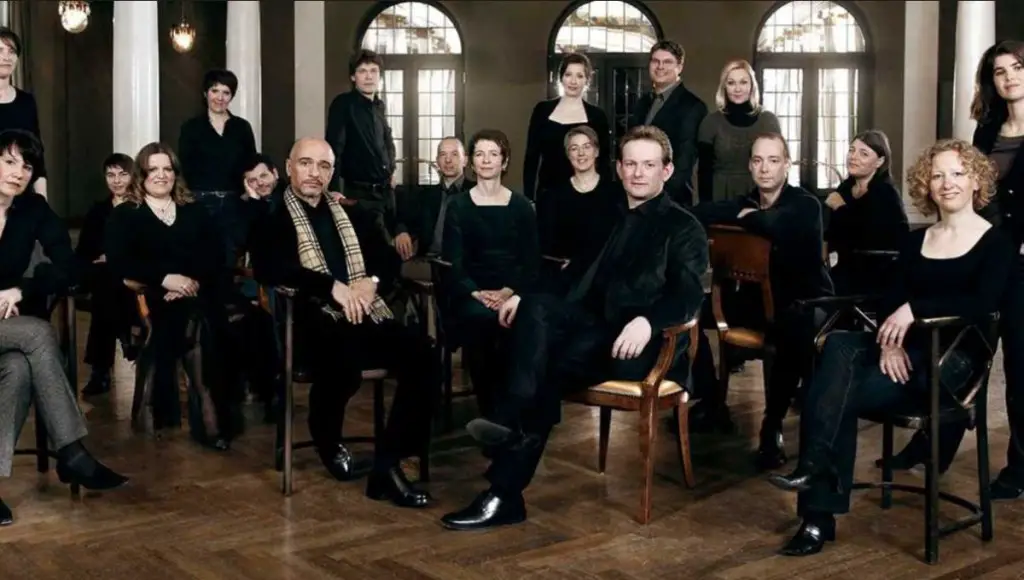German baroque music ensemble Hofkapelle München performs Brandenburg Concerto No. 4 in G Major, BWV 1049 by Johann Sebastian Bach. 1st violin and conductor: Rudiger Lotter. Recorded on March 27, 2016, at Het Zondagochtend Concert in the Royal Concertgebouw Concert Hall in Amsterdam.
Brandenburg Concerto No. 4 by Johann Sebastian Bach
Johann Sebastian Bach’s Brandenburg Concerto No. 4, part of the collection known as the Brandenburg Concertos, stands as a pinnacle of Baroque orchestral music. Composed around 1721, this concerto was dedicated to Christian Ludwig, Margrave of Brandenburg-Schwedt, hence the name. The concerto showcases Bach’s ingenious ability to blend Italian and German styles, manifesting his mastery over complex counterpoint and harmonious integration of solo and ensemble parts.
This concerto’s title on autograph score is “Concerto 4ta à Violino Principale, due Fiauti d’Echo, due Violini, una Viola è Violone in Ripieno, Violoncello è Continuo.” It is scored for two violins, viola, cello, violone and basso continuo.
Brandenburg Concerto No. 4 is scored for violin, two flauto dolce (recorders), and string orchestra, including a continuo part, which typically involves a harpsichord and a cello. The choice of instruments reflects the innovative and experimental spirit of the Baroque era, with Bach exploring the textural contrasts and coloristic possibilities of combining these specific timbres.
The concerto is structured in three movements, adhering to the fast-slow-fast format typical of the Italian concerto grosso.
- Allegro. The first movement is notable for its lively and intricate interaction between the soloists and the full ensemble. The violin and recorders engage in spirited dialogues, weaving through the robust string textures and driving the movement forward with vitality and precision.
- Andante. The second movement presents a marked contrast with its serene and contemplative mood. Here, the solo violin takes a more pronounced role, spinning a delicate and expressive melody over a minimal accompaniment. This movement exemplifies Bach’s skill in creating depth and emotion through simple yet effective means, allowing the solo violin’s lyricism to shine.
- Presto. The final movement returns to the energetic and joyful spirit of the opening. It is a dazzling display of virtuosity and compositional brilliance, with the soloists and ensemble engaging in a fast-paced and exuberant exchange. This movement encapsulates the essence of the Baroque concerto, with its blend of individual expression and collective synergy, culminating in a triumphant and exhilarating finale.
Bach’s Brandenburg Concerto No. 4 is celebrated for its vibrant energy, intricate textures, and the masterful balance between solo and ensemble passages. It embodies the Baroque ideals of contrast, ornamentation, and expressive depth, making it a cherished work in the classical music repertoire and a vivid example of Bach’s unparalleled musical genius.
The violin part in this concerto is extremely virtuosic in the first and third movements. In the second movement, the violin provides a bass when the concertino group plays unaccompanied.
It has been debated what instrument Bach had in mind for the “flauti d’echo” parts. Nowadays these are usually played on recorders, although traverse flutes are sometimes used instead: it is also theorized Bach’s original intent may have been the flageolet.
Bach adapted the 4th Brandenburg concerto as a harpsichord concerto, BWV 1057.
Hofkapelle München
The Hofkapelle München is seen today as the leading ensemble for historic performing practice in the south of Germany. Since its re-formation in 2009 under the artistic direction of the renowned Baroque violinist and conductor Rüdiger Lotter the Hofkapelle München acquired an excellent reputation. Thus the Süddeutsche Zeitung wrote in 2013: “One is inclined to place Lotter and his Hofkapelle München among the very best ensembles specializing in Early Music, but the Hofkapelle would stand out clearly with its magnificent concentration and the literally addictive pleasure they take in playing.”
Among the artists who make guest appearances with the Hofkapelle München are Reinhard Goebel, Alessandro de Marchi, Dorothee Oberlinger, Hille Perl, Christiane Karg, and Lawrence Zazzo. The orchestra also works together with choirs such as the Tölzer Knabenchor and the Bavarian Radio Choir.

One of their musical focus is based on Bavarian’s rich musical past. Until 2013 the Hofkapelle also regularly cooperated with the August Everding Bavarian Theatre Academy in selecting repertoire and doing productions of 17th and 18th-century opera.
One highlight of the cooperation was the 2011 production of Johann Adolph Hasse’s opera “Didone Abbandonata”, under the baton of Michael Hofstetter. The ensemble’s 2013 opera production, “Adelasia ed Aleramo” by Simon Mayr conducted by Andreas Spering, was likewise a great success. “The Hofkapelle München performs the opera on original instruments at a fabulously high level” – thus the reviewer of “Der Donaukurier”.
In 2012, together with the countertenor Valer Sabadus, the orchestra was awarded the German Record Critics’ Prize for their CD “Hasse Reloaded”. The next very successful recording was the “Six Brandenburg Concertos” of Bach in 2013. In 2014 the Hofkapelle München recorded together with Valer Sabadus his new solo CD “Le belle immagini” under the baton of Alessandro de Marchi. This CD was awarded the Echo Klassik 2015.
Sources
- Brandenburg Concertos on Wikipedia
- Hofkapelle München home page
